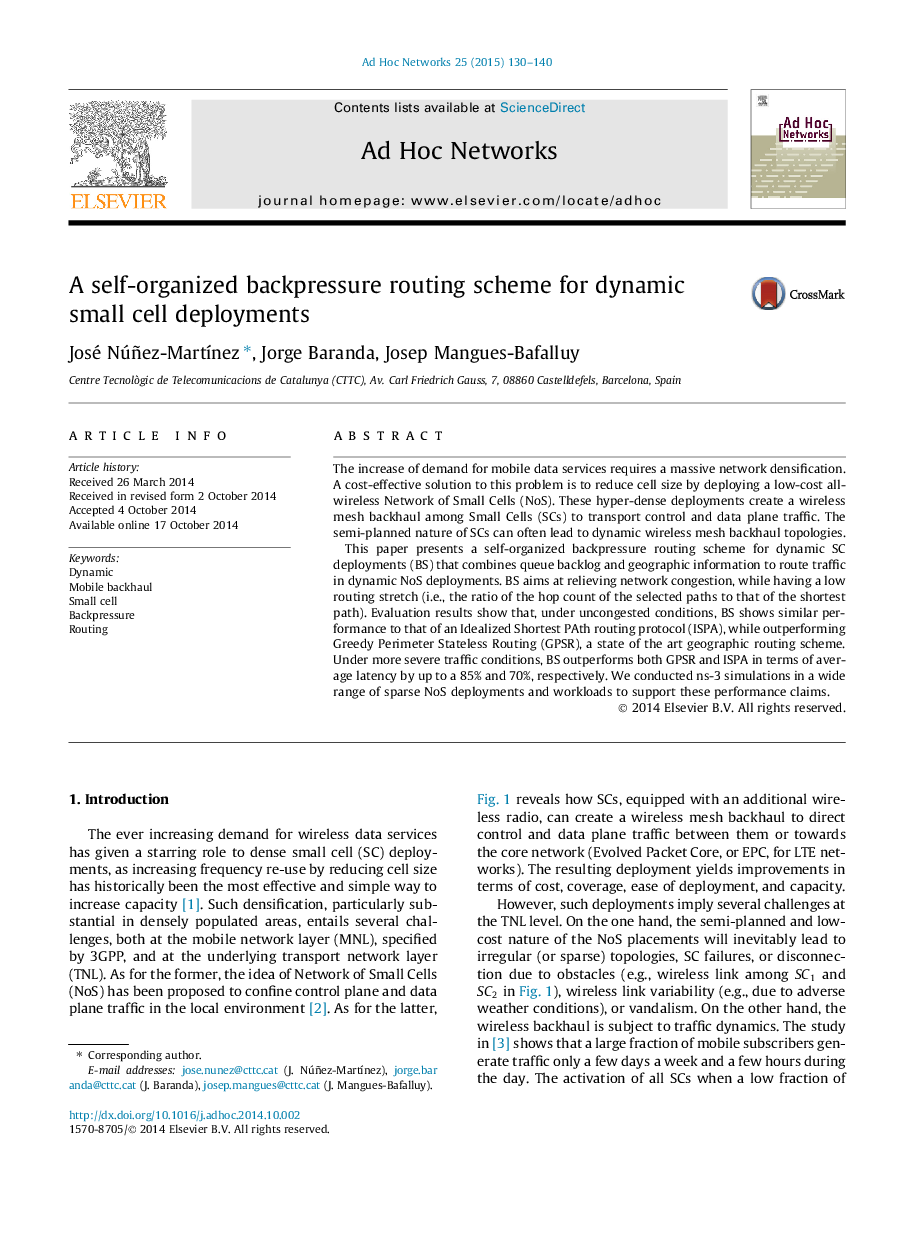| Article ID | Journal | Published Year | Pages | File Type |
|---|---|---|---|---|
| 445396 | Ad Hoc Networks | 2015 | 11 Pages |
The increase of demand for mobile data services requires a massive network densification. A cost-effective solution to this problem is to reduce cell size by deploying a low-cost all-wireless Network of Small Cells (NoS). These hyper-dense deployments create a wireless mesh backhaul among Small Cells (SCs) to transport control and data plane traffic. The semi-planned nature of SCs can often lead to dynamic wireless mesh backhaul topologies.This paper presents a self-organized backpressure routing scheme for dynamic SC deployments (BS) that combines queue backlog and geographic information to route traffic in dynamic NoS deployments. BS aims at relieving network congestion, while having a low routing stretch (i.e., the ratio of the hop count of the selected paths to that of the shortest path). Evaluation results show that, under uncongested conditions, BS shows similar performance to that of an Idealized Shortest PAth routing protocol (ISPA), while outperforming Greedy Perimeter Stateless Routing (GPSR), a state of the art geographic routing scheme. Under more severe traffic conditions, BS outperforms both GPSR and ISPA in terms of average latency by up to a 85% and 70%, respectively. We conducted ns-3 simulations in a wide range of sparse NoS deployments and workloads to support these performance claims.
